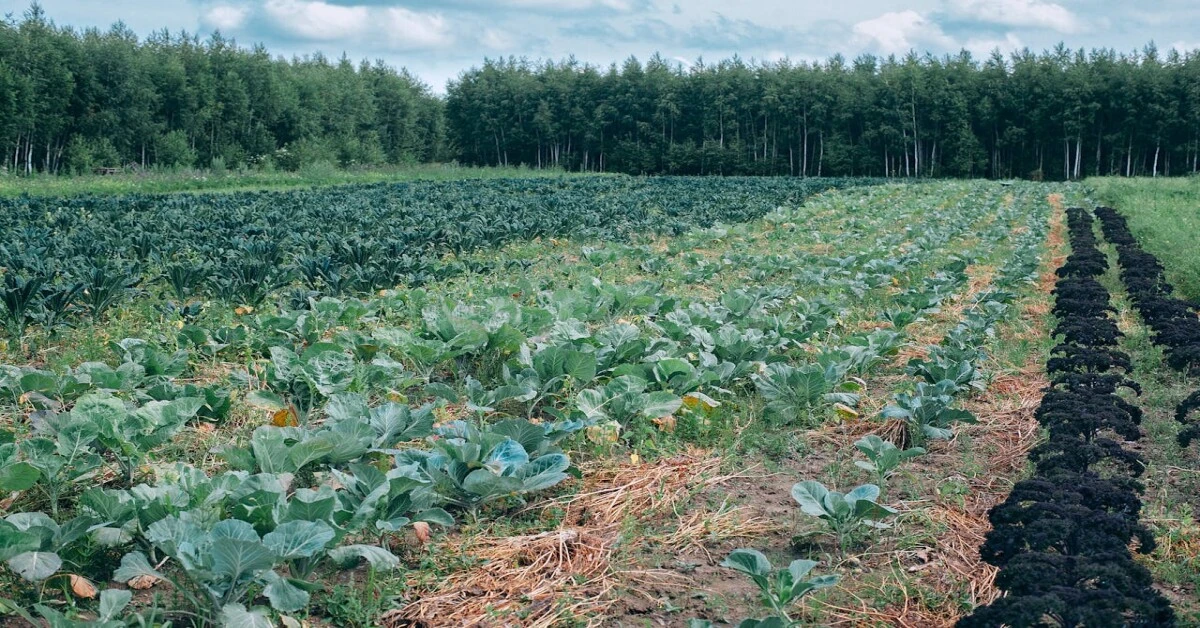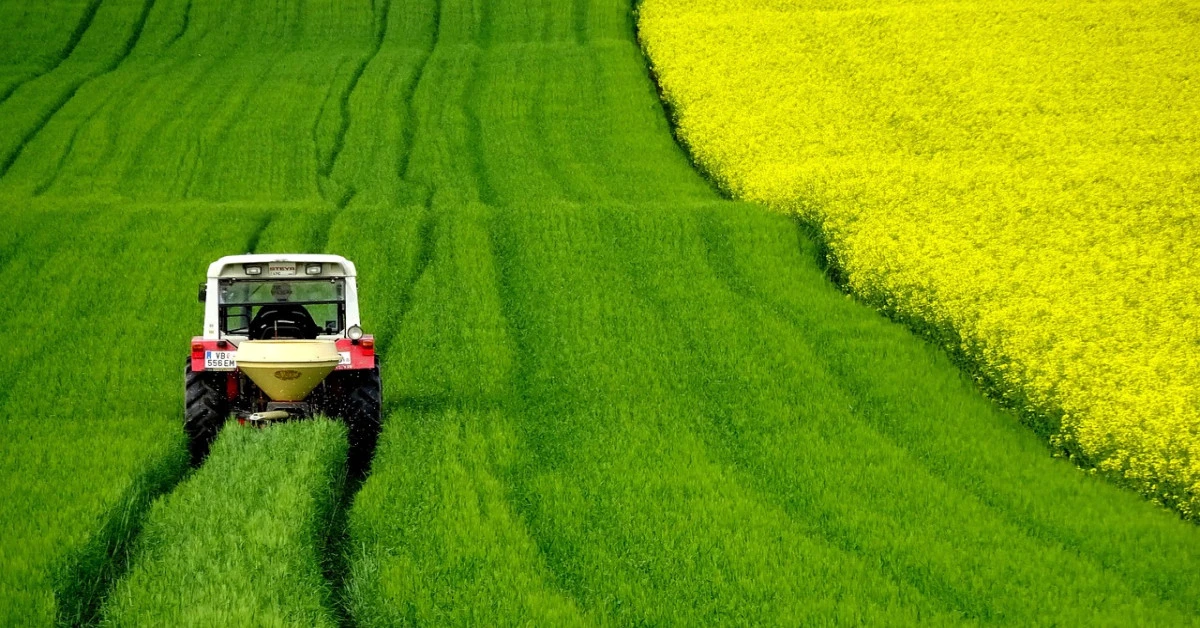Farmers’ worldwide face challenges like declining soil fertility, unpredictable weather, and pest infestations. To overcome these issues, many turn to intercropping and crop rotation, two time-tested farming methods.
These techniques not only enhance soil health but also boost crop productivity without relying heavily on chemical fertilizers.
Intercropping involves growing different crops together in the same field, helping plants support each other. Crop rotation, on the other hand, means planting different crops in a sequence to prevent soil depletion.
Both methods promote sustainable agriculture by reducing pests, improving nutrient availability, and increasing overall farm yields.
The key advantages of intercropping and crop rotation go beyond better harvests. They contribute to long-term soil conservation, biodiversity, and food security. Adopting these methods ensures a healthier environment and a more stable agricultural system for future generations.
What is Intercropping and Crop Rotation?
Intercropping: A Smarter Way to Grow: Intercropping is a farming method where two or more crops grow together in the same field. Instead of planting just one crop, farmers mix compatible plants to maximize space and resources.
This technique improves soil structure, enhances biodiversity, and increases overall yield. Common examples include maize with beans or wheat with mustard.
Crop Rotation: A Natural Soil Booster: Crop rotation means growing different crops in a specific sequence over multiple seasons. For example, a farmer might grow legumes one season and cereals the next. This prevents soil exhaustion and naturally replenishes nutrients.
This agricultural method also reduces the risk of pests and diseases, unlike monoculture, where a single crop depletes the soil.

Why Intercropping And Crop Rotation Are Better Than Monoculture
Traditional farming relies heavily on monoculture—growing the same crop repeatedly. While this may seem efficient, it drains soil nutrients and increases pest risks.
In contrast, intercropping and crop rotation maintain soil health and enhance farm productivity. These methods reduce the need for chemical fertilizers and pesticides, making farming more sustainable.
Advantages of Intercropping
Intercropping bring several advantages in agriculture these include:
- Enhanced Soil Fertility
Different crops contribute different nutrients to the soil. For example, legumes fix nitrogen, benefiting neighboring plants. This reduces the need for synthetic fertilizers, making farming more eco-friendly.
- Pest and Disease Control
Intercropping prevents the rapid spread of pests and diseases. If one crop attracts insects, the presence of another crop can deter them. This reduces dependency on chemical pesticides.
- Efficient Space Utilization
Farmers can grow more food on the same land by combining crops with different growth habits. For example, tall corn plants provide shade for low-growing beans, allowing both to thrive.
- Improved Yield Stability
Intercropping ensures continuous harvests, reducing dependency on a single crop. If one crop fails due to bad weather, the other can still provide income and food security.
Also Read: Intercropping vs. Mixed Cropping Major Differences
Benefits of Intercropping
Practicing intercropping in agriculture bring several benefits these include:
- Economic Benefits
Intercropping increases farm profitability by producing multiple crops on the same land. If one crop faces a price drop, the other can still generate income. This diversification protects farmers from financial losses caused by unpredictable market conditions.
Additionally, intercropping reduces input costs like fertilizers and pesticides, as companion crops naturally enrich the soil and deter pests.
- Biodiversity Conservation
Intercropping creates a balanced ecosystem by supporting various beneficial organisms. For example, flowering plants attract pollinators like bees, boosting crop production. At the same time, predator insects such as ladybugs feed on pests, reducing the need for chemical sprays.
The presence of different plant species also enhances microbial diversity in the soil, improving overall soil health.
- Reduced Soil Erosion
Different crops have different root structures that work together to protect the soil. Deep-rooted plants anchor the soil, while shallow-rooted plants create a dense ground cover that prevents wind and water erosion. This stabilizes the land and maintains soil fertility.
Over time, reduced erosion ensures better water retention and nutrient availability, leading to higher yields.
- Water Efficiency
Intercropping helps optimize water use by combining crops with different water needs. Deep-rooted plants draw moisture from lower soil layers, allowing shallow-rooted plants to use surface water. This prevents excessive water loss and makes irrigation more effective.
Additionally, taller crops provide shade for shorter plants, reducing evaporation and helping conserve soil moisture during dry periods.
Advantages of Crop Rotation
Crop rotation is a time-tested farming method that offers numerous benefits compared to monoculture or continuous cropping. By growing different crops in a planned sequence, farmers can naturally improve soil health, reduce pest problems, and enhance long-term productivity.
Unlike monoculture, which depletes nutrients and increases disease risks, crop rotation creates a balanced farming system.
- Breaks Pest and Disease Cycles
Planting the same crop repeatedly allows pests and diseases to thrive. Crop rotation disrupts this cycle by introducing different plants that pests cannot easily adapt to.
For example, rotating corn with legumes reduces corn rootworm infestations. This method lowers the need for chemical pesticides, making farming more sustainable and cost-effective.
- Improves Soil Structure
Different crops have different root systems. Deep-rooted plants, like sunflowers, break up compacted soil, improving aeration and drainage. Shallow-rooted plants, such as wheat, help bind the topsoil, reducing erosion. This natural process enhances soil texture, making it easier for crops to absorb water and nutrients.
- Enhances Nutrient Availability
Leguminous crops, such as peas and beans, fix nitrogen in the soil, enriching it for future crops. This reduces the need for synthetic fertilizers and improves soil fertility over time. When rotated with nutrient-demanding crops like wheat or maize, nitrogen-fixing plants create a self-sustaining nutrient cycle.
- Reduces Dependence on Chemical Fertilizers
By replenishing soil nutrients naturally, crop rotation decreases the reliance on artificial fertilizers. Organic matter from decomposed crop residues further improves soil quality. This sustainable approach not only saves costs but also minimizes environmental pollution caused by excessive fertilizer use.
Benefits of Crop Rotation
Crop rotation plays a crucial role in maintaining agricultural sustainability. By preventing soil degradation and improving crop health, it ensures long-term productivity. Farmers worldwide rely on this method to enhance soil fertility, increase yields, and adapt to changing climatic conditions.
- Increases Crop Yield
Healthy soil leads to better plant growth. Crop rotation maintains soil fertility by balancing nutrient levels and preventing exhaustion. Farmers using this method often experience higher yields compared to those practicing continuous cropping.
With improved soil structure and reduced pest pressure, crops grow more vigorously and produce better harvests.
- Prevents Soil Degradation
Continuous cropping strips the soil of essential nutrients, leading to poor productivity. Crop rotation helps maintain soil organic matter by adding decomposed plant residues back into the soil. This promotes carbon sequestration, which improves soil quality and prevents long-term degradation.
- Climate Resilience
Extreme weather conditions can impact farming. However, crop rotation increases resilience by diversifying plant species. Deep-rooted crops withstand drought better, while cover crops protect against heavy rainfall. This adaptability makes farming more stable, even in unpredictable climates.
- Sustainability in Farming
Crop rotation supports regenerative agriculture by promoting a natural balance in the ecosystem. It reduces dependency on synthetic inputs, conserves water, and enhances biodiversity. As a result, it helps build a more sustainable food system while protecting the environment for future generations.
Why Intercropping and Crop Rotation Matter in Agriculture
Intercropping and crop rotation play a vital role in modern farming. These methods improve soil health, boost yields, and make agriculture more sustainable. Unlike monoculture, they create a balanced ecosystem that benefits both farmers and the environment.
- Long-Term Soil Health Management
Healthy soil is the foundation of successful farming. Intercropping prevents soil depletion by growing crops with different nutrient needs together. Crop rotation replenishes essential nutrients naturally, reducing the need for chemical fertilizers.
Over time, these practices enhance soil fertility and structure, making farms more productive.
- Food Security and Stability
Growing diverse crops lowers the risk of total crop failure. If one crop struggles due to pests or weather changes, others may thrive. This ensures a steady food supply, making farms more resilient against unpredictable conditions. Farmers also gain financial stability by harvesting multiple crops throughout the year.
- Climate Change Adaptation
Extreme weather patterns are a growing concern for agriculture. Crop rotation helps soils retain moisture, reducing drought stress. Intercropping minimizes soil erosion and protects plants from strong winds. These techniques make farming more adaptable to shifting climate conditions.
- Economic and Environmental Gains
Sustainable farming methods reduce input costs and boost profits. Intercropping allows farmers to maximize land use, increasing overall yields. Crop rotation minimizes the need for synthetic fertilizers, cutting expenses and reducing pollution.
By adopting these techniques, farmers can improve both their earnings and environmental impact.
Practical Tips for Implementing Intercropping and Crop Rotation
- Choose Compatible Crops
Select crops that grow well together. For example, legumes fix nitrogen, benefiting cereal crops like wheat or corn.
- Plan a Rotation Schedule
Rotate crops seasonally to improve soil health. Avoid planting the same crop in the same field two years in a row.
- Monitor Soil Health
Regular soil testing helps identify nutrient imbalances. Adjust crop choices or apply organic amendments to maintain fertility.
- Use Cover Crops
Cover crops, like clover or mustard, enrich the soil and suppress weeds between main crops. They also prevent soil erosion.
- Adapt to Local Conditions
Consider factors like rainfall, temperature, and soil type. Choose crop combinations and rotation plans suited to your region.
By following these steps, farmers can successfully implement intercropping and crop rotation, leading to healthier soil and better harvests.
Conclusion
Intercropping and crop rotation offer numerous benefits that improve soil health, increase yields, and reduce farming risks. These methods naturally restore nutrients, control pests, and make crops more resilient to changing weather.
Compared to monoculture, they create a balanced system that ensures long-term agricultural success.
Sustainable and profitable farming depends on smart land management. By practicing intercropping and crop rotation, farmers can reduce their reliance on chemical fertilizers and pesticides.
These techniques also help conserve water, prevent soil erosion, and promote biodiversity, making agriculture more eco-friendly.
For long-term success, farmers should adopt these methods to maintain fertile land and stable crop production. The advantages of intercropping and crop rotation go beyond short-term gains—they ensure food security and environmental protection.
Start using these techniques today and discover why farmers should practice intercropping and crop rotation for a better future.










